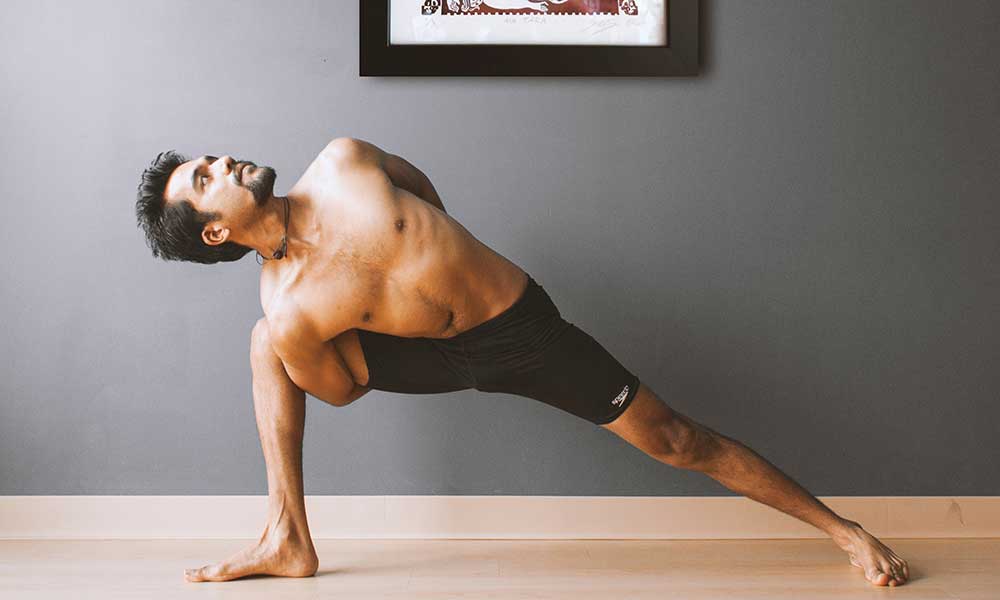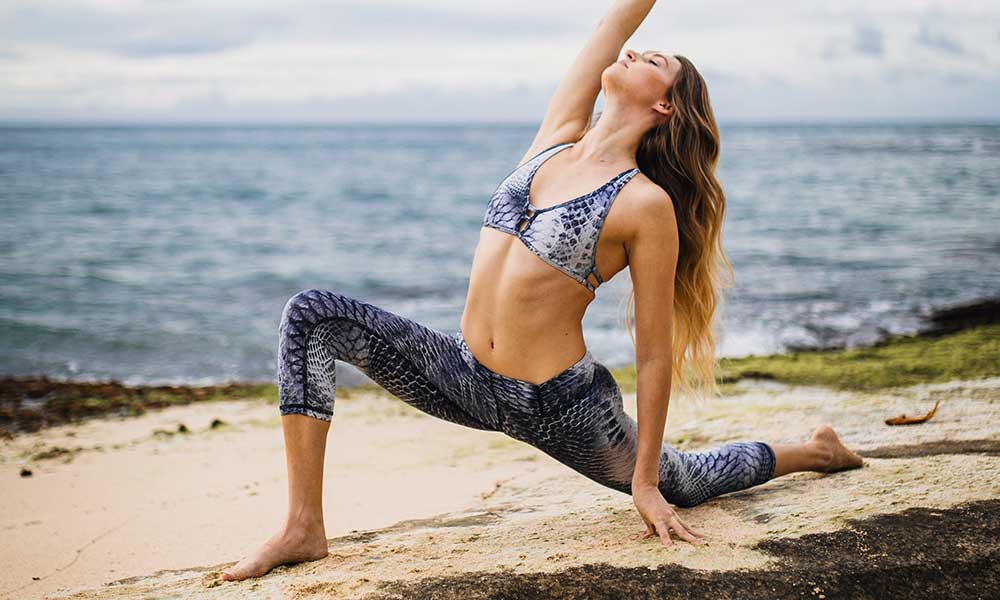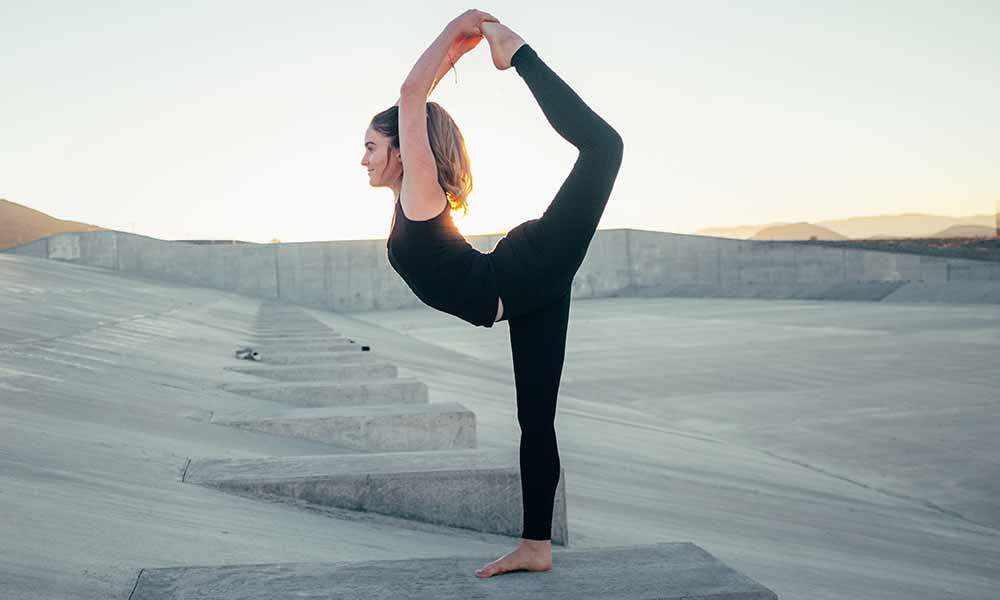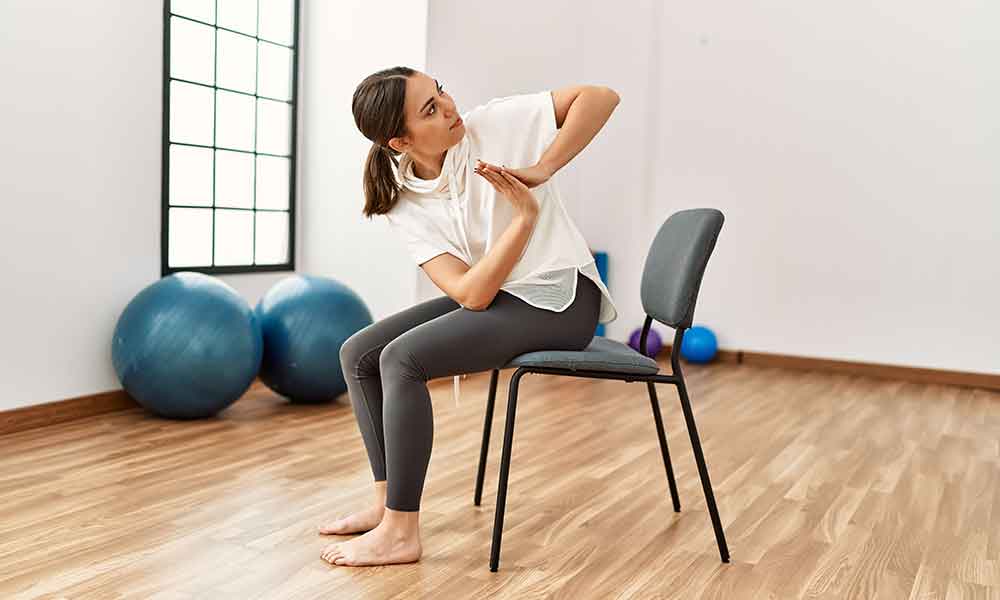If you are on a mission to embark on a yoga practice on your own, either at home or at the park, you may be wondering: How long should I hold each pose? This is a very common question for those who are new to yoga or who haven’t ever practiced outside of a studio. The amount of time that is suitable to stay in a yoga pose varies depending on a variety of factors such as the kind of yoga you are practicing, the pose itself, and the goal of your yoga session. Keep reading to learn more about different yoga styles and how long to hold each pose.
What is the purpose of your yoga practice?
The amount of time that you should hold a yoga pose is largely dependent on the reason why you are practicing in the first place. Are you doing yoga as a warm-up for a more strenuous strength workout? Are you trying to relax? Different goals call for different hold times.
To better understand how long to hold a yoga pose, you should first understand the way hold times are counted in yoga. Typically, hold times are counted in breaths:
- A short hold time consists of about 3 breaths.
- A medium hold time consists of about 5 breaths.
- A long hold time consists of about 8 or more breaths.
Keep in mind that breath times vary from person to person. One person might take six seconds to complete a round of breath while another person might take 10 seconds, which is the ideal amount of time to complete an inhale and an exhale.
Goals and benefits of holding poses for a short amount of time
Holding yoga poses for short periods of time are a great way to wake up the body and warm up your muscles and your mind. If you are looking to do a quick workout or perhaps even a warm-up for a more intense exercise, you might want to hold poses for a short duration. Doing so will give you a quick boost of energy and help smooth over any tension in your muscles.
To do this, you’ll hold poses for around 3-5 breaths, depending on what feels good for your body.
Benefits of holding poses shortly:
- Warm-up/Muscle Activation: Yoga poses that require you to activate specific muscle groups are excellent for introducing movement to the body before more strenuous workouts. With the right warm-up, you’ll be able to execute your workout to the best of your abilities and avoid getting hurt.
- Quick boost of energy: Holding yoga poses for short spurts of time can be great for giving your body a quick jolt of energy. Chest opening yoga postures can even help stimulate the sympathetic nervous system to increase energy levels and enhance your mood.
- Less endurance work: When we hold yoga poses shortly, our muscles aren’t being pushed too hard. This is beneficial for days where your muscles are sore because you can still get some movement in without harming your body. Stretching is also a great way to enhance blood flow and boost recovery times.
Goals and benefits of holding a yoga pose for a long time
Holding postures for a longer duration also has its own unique benefits depending on your yoga goals:
- To build strength, muscle endurance, body awareness, and deep muscle activation.
- To recover and work on passive flexibility.
Practicing yoga for strength and endurance
If the reason you are practicing yoga is to build strength and muscle endurance, you will definitely want to hold poses for a longer stretch of time. How long you hold a pose will depend on the level of difficulty of the yoga pose.
As a general rule of thumb, you should shoot for 3-6 rounds of breath with each breath lasting ten seconds. If done properly, this should result in a hold time of about 30 seconds to a minute. For best results, strive to hold poses for about one minute, especially with the more challenging postures. However, never push yourself to the point of injury or severe pain. It should feel challenging and slightly uncomfortable, but not necessarily painful.
When longer hold times are paired with proper breathing exercises, there are so many benefits to be attained, such as:
- Getting in a full-body workout: Holding yoga poses for a long time challenge your strength and muscle endurance which can lead to building lean muscle mass.
- Builds strength and muscle endurance: When you hold a pose for a long time, you are able to develop muscle activation needed to hold more intense yoga postures that require a higher level of strength and mobility.
- Improves balance: Holding poses for long periods of time helps train and challenge your balance as your muscles become tired.
- Improves technique and body awareness: Holding poses for long periods of time help to improve your yoga technique by becoming more aware of your muscles, posture, and overall awareness. The longer you stay in a yoga pose, the harder your muscles have to work, which leads to better activation.
- Increases mobility: Keeping your body engaged in a pose for longer leads to stretching the active muscles of the pose you are in, enhancing your flexibility and mobility.
Practicing yoga for rejuvenation and restoration
One of the sweetest reasons for practicing yoga is the full-body relaxation and recovery that you can get from the combination of deep breathing and deep stretching. Yin Yoga, a slow-paced and restorative style of yoga, is a practice where you can expect to experience longer hold times.
In recovery-focused yoga practice, you can prepare to hold poses for 1 to 5 minutes. That ends up being around 6 rounds of breath, ten seconds each. Because these yoga poses are done to relieve tension and stretch out the muscles in the body, you won’t be pushing your body too hard, shaking, or breaking a sweat.
When we hold poses with the intent to restore and recover, here are some of the instant benefits we may experience:
- Relief of muscle soreness.
- Tension relief.
- Pain relief.
- Quick recovery from other workouts you may have done throughout your day.
- Increased flexibility.
Other factors that contribute to hold times
There are a lot of other factors that come into play when trying to decide how long to hold physical postures in yoga. A good yoga teacher will usually guide you to listen to your body and do whatever feels good. Here are some of the other things to consider when planning out your hold times.
Holding yoga poses based on how you are feeling physically and mentally
Being in tune with your body means knowing when to rest. Before deciding how long to hold a pose in yoga, check in with yourself and how you are feeling. Is your body tired? Are you extremely sore? Alternatively, maybe your body has a lot of energy that needs to be burned.
Not every workout you do has to be mentally and emotionally exhausting. It’s okay to have a slow-flow day or even just a rest day where you want to do some mild stretches. If you’re having a hard time getting motivated, a short exercise with three rounds of breath is a good way to get some movement in for a quick pick-me-up.
If you are having a stressful day and need some time to relax, consider doing some restorative yoga.
How long to hold poses based on your level of fitness
When practicing yoga, your fitness level is another factor that can determine how long you are able to hold yoga poses for. If you are not used to exercising, your ability to hold challenging yoga poses will not be as high as someone who consistently works out or does yoga.
Keep in mind that it is perfectly fine to start yoga at a beginner level, and gradually hold poses for longer periods of time as you progress. As you begin to grow in your yoga practice, you will begin to develop more strength, flexibility, mobility, and self-esteem.
As long as you are always pushing yourself just a little bit further each time you practice, you will find yourself being able to accomplish longer hold times before you know it!
How long to hold yoga poses by level of difficulty
Your ability to hold a yoga pose for a long time will also depend on how challenging the pose is. Some postures are more difficult than others by nature no matter how seasoned of a yogi you may be. For example, crow pose is going to take a lot more mental and physical energy than mountain pose.
While you might be able to stay in a few poses for several minutes, there might be that one pose that you can only hold for several seconds. Sometimes, how long you are able to stay in a yoga pose depends on how many times you have practiced that pose before already.
For example, someone who has done tree pose before will probably be able to stay in the pose a little longer than someone who is attempting it for the first time ever. Be easy on yourself when it comes to the more challenging poses and let your body tell you when it is time to stop.
How long should I hold yoga poses based on the style of yoga
Another way you can determine how long your hold times should be when practicing yoga is to categorize them depending on the type of yoga you are practicing. Every style of yoga is different and serves its own unique purpose.
Keep in mind that these are just guidelines and that each practice is modifiable to fit your specific needs.
Yin Yoga
As we discussed previously in this article, yin yoga is a restorative practice that targets the deep connective tissues in your body as well as your joints. In this style of yoga, most of the poses are practiced on the ground, focusing primarily on the hips, pelvis, inner thighs, and low spine.
When practicing Yin, you should aim to hold poses for at least five minutes, possibly more if you can. Some of the benefits of practicing this style of yoga are:
- Relieves anxiety.
- Reduces stress.
- Brings balance to the mind and body.
- Allows time for clarity and quiet reflection.
- Allows us to meditate.
- Improves symptoms of insomnia.
- Improves circulation and range of motion.
- Enhances flexibility.
Vinyasa Yoga
Vinyasa is a very popular style of yoga in the United States that focuses on linking breaths to movement, targeting large muscle groups. Due to the fast pace of Vinyasa yoga, it can also double as a cardiovascular workout which can aid in weight loss. In Vinyasa Yoga, poses are held for about 1-5 minutes. The benefits of Vinyasa are:
- Increased serotonin, norepinephrine, dopamine, and endorphins can relieve symptoms of depression.
- Relieves stress.
- Connects the mind and body.
- Improves focus and concentration.
- Increases stamina.
- Builds muscle strength.
Iyengar Yoga
Iyengar Yoga is a style of yoga that focuses on the physicality of the practice, such as proper alignment and posture. In Iyengar Yoga, poses are held for about 1-5 minutes. The benefits of Iyengar Yoga are:
- Reduced stress.
- Feelings of calm and serenity.
- Improves concentration.
- Prepares us for meditation.
- Improves stamina.
- Improves flexibility.
- Improves strength.
Ashtanga Yoga
Ashtanga Yoga is an ancient style of yoga that is comprised of the same poses, performed in the same order every time. It is a highly disciplined practice consisting of 5 Ashtanga series, with each practitioner having to master each pose in the series before being able to move on to the next. When practicing Ashtanga Yoga, poses should be held for at least 5 minutes.
The benefits of Ashtanga Yoga are:
- Improved concentration.
- Improves endurance.
- Builds self-esteem and confidence.
- Teaches commitment and discipline.
- Lowers stress and anxiety.
- Lowers blood pressure.
Bikram Yoga
Bikram Yoga is a style of hot yoga that takes place in a room as hot as 108 degrees. The classes are 90 minutes long and made up of the same 26 poses. Yoga poses done in Bikram Yoga should be held for up to 1 minute per pose.
The benefits of Bikram Yoga are:
- Reduced stress.
- Improved focus and concentration.
- Improved mental endurance.
- Supports mental stability and stamina.
- Can balance out hormones in the body.
- Detoxification of the body.
- Stretches and strengthens muscles.
- Can support weight loss.
Power Yoga
Power Yoga is a form of yoga that combines vinyasa with holding poses for the purpose of building muscle. In power yoga, poses are typically held for as short as 4 to 40 seconds.
This fast-paced yoga style can lead to:
- Weight loss.
- High energy levels.
- Improved focus and concentration.
- Enhanced mood.
- Improved cardiovascular health.
- Improved posture.
- Increased muscle strength.
The Bottom Line
The length of time that you hold yoga poses for will depend on the kind of yoga practice you are doing, what your goals are, and your body’s physical capabilities. Certain styles of yoga will require you to stay in a pose for a specific amount of breath cycles in order to acquire maximum benefits.
While there are often recommendations for how long to hold a yoga pose, there is no right or wrong number of breaths to take. Do whatever makes you feel good and remember to listen to your body.







